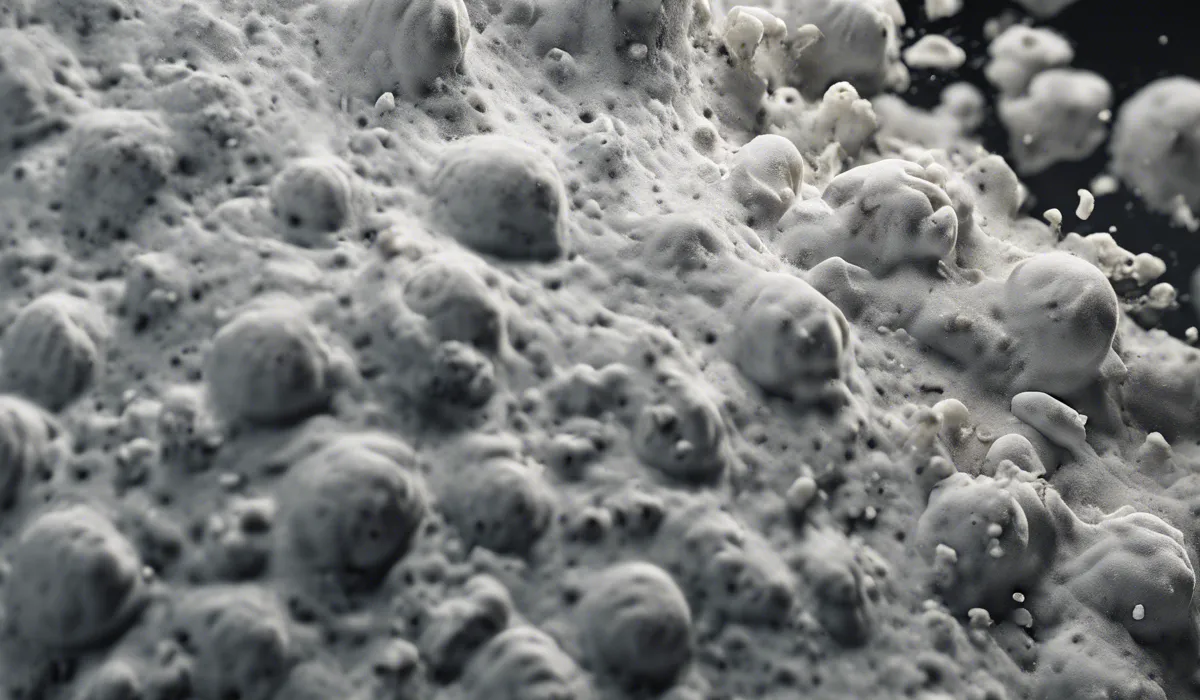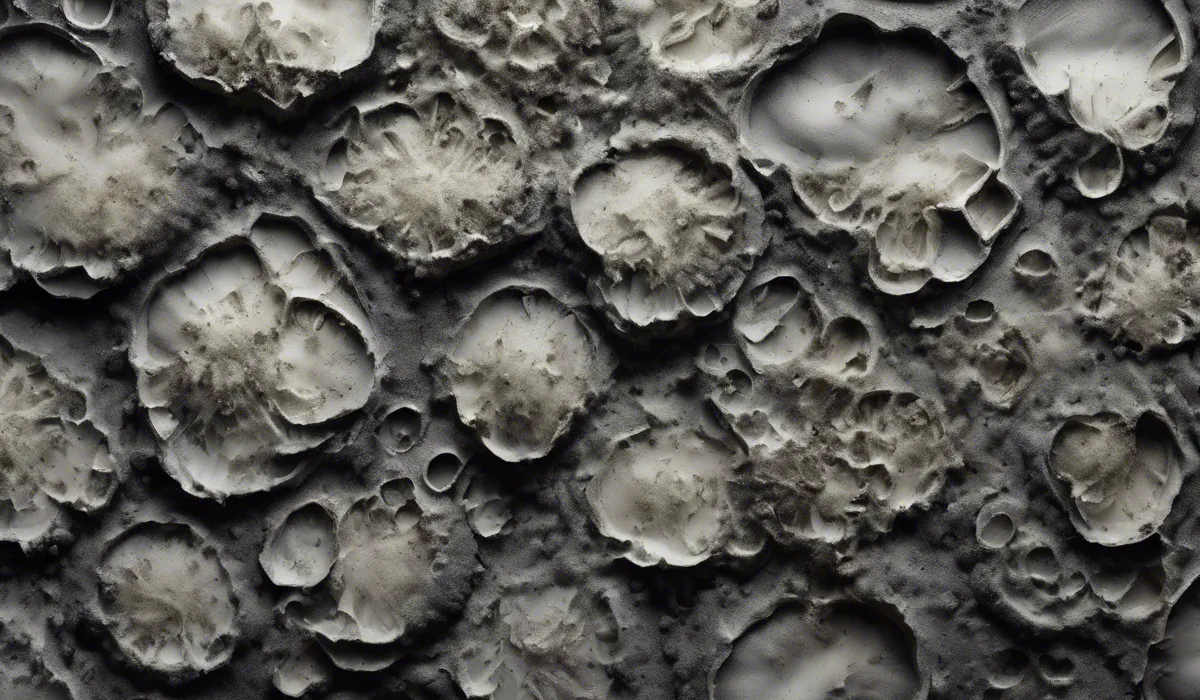Mold is typically soft and can often feel slimy or fuzzy to the touch. However, certain molds may have a harder, more powdery texture when they are dry. The consistency of mold can vary depending on the species and the surface it grows on.
Mold Composition and Characteristics

Definition of Mold
Mold is a type of fungus that can grow almost anywhere there is moisture and organic material. It reproduces through tiny spores that float through the air.
When these spores land on suitable surfaces, they can start to grow and spread. Mold plays an essential role in nature by breaking down dead organic matter, but it can also be a problem in homes, causing damage and health issues.
The Basic Structure of Mold
The building blocks of mold are the hyphae, which are thread-like structures. When many hyphae intertwine, they form a network called mycelium.
This mycelium can grow across and into materials as mold feeds on the organic substances within them.
Explanation of the Varying Textures of Mold
Mold can feel different depending on its type and where it is growing. Some molds feel soft and almost jelly-like, while others can be hard and crumbly.
The texture of mold is not just a simple classification; it’s a result of its structure and the conditions under which it grows.
Factors Influencing the Hardness or Softness of Mold
Several factors determine whether mold will be hard or soft. These include the specific species of mold, the amount of moisture available, the temperature, and the food source it is growing on.
Understanding these factors can help us manage mold growth and mitigate its effects.
Types of Mold and Their Consistencies

Common Types of Mold Found in Homes and Nature
There are countless types of mold, but some are more commonly found in homes and in nature.
These include Aspergillus, Cladosporium, Penicillium, and Stachybotrys, often referred to as black mold. Each has its preferred growing conditions and distinct physical characteristics.
Description of the Typical Consistency of Each Type
Aspergillus is often powdery, Cladosporium can be suede-like, Penicillium typically appears velvety, and Stachybotrys is known for its slimy texture.
These textures can help in identifying the type of mold present, which is crucial for remediation efforts.
Examples of Hard Molds
Certain types of Aspergillus can form hard, dense structures, especially when they grow on materials with less moisture.
Aspergillus niger, for example, can create a mold colony that feels firm to the touch when it has dried out.
Examples of Soft Molds
Rhizopus stolonifer, commonly known as black bread mold, is a soft mold. It often feels fuzzy and can grow rapidly on bread and soft fruits, creating a cottony mycelium that is easy to disturb with a gentle touch.
Factors Affecting Mold Texture

Environmental Conditions That Impact Mold Texture
Temperature, light, and air circulation all play a part in the texture of mold. Molds that grow in warmer temperatures with little air movement can develop a softer texture, while those in cooler, drier, and well-ventilated areas might become harder and more brittle.
Role of Moisture Content in Determining Mold Consistency
Moisture is perhaps the most critical factor in determining mold consistency. High moisture levels tend to produce softer molds, as they provide the necessary water for mold to thrive and maintain a jelly-like structure.
On the other hand, low moisture content often leads to harder and more powdery mold colonies.
Stage of Growth and Its Effect on Mold Hardness or Softness
As mold progresses through its life cycle, its texture can change. Young mold colonies may start off soft and become harder as they age and lose moisture.
Understanding the growth stage of mold can assist in identifying the best approach to mold remediation.
Impact of Substrates and Surfaces on Mold Texture
The surface mold grows on will significantly influence its texture. Porous materials like wood and drywall can absorb moisture, leading to softer mold.
Non-porous materials like plastics or metals may lead to a harder mold surface due to less available moisture.
FAQs About Mold Consistency
Is mold typically hard or soft to the touch?
Mold is typically soft, and it can feel slimy or fuzzy when touched.
Can mold ever feel hard or powdery?
Yes, certain molds may have a harder, more powdery texture when they are dry.
Does the consistency of mold vary depending on the species?
Yes, the consistency of mold can vary depending on the species of the mold.
Will mold have the same texture on all surfaces it grows on?
No, the texture of mold can change depending on the surface it grows on.
How can I identify mold by its consistency?
You can identify mold by its consistency by checking if it’s soft and slimy or fuzzy, or if it’s hard and powdery when dry.
Final Thoughts
The texture of mold varies significantly, often presenting as soft and potentially slimy or fuzzy.
Yet, it’s not uncommon for certain molds to adopt a harder, more powdery consistency when dry.
These variations are influenced by the specific mold species and the particular surface they colonize.
